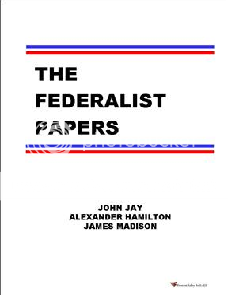RealWorldGraduation_Question_88_Social_Security <– PDF
Both the question and answer are contained in the PDF file, since the question requires a graphic that does not translate well into this format.
Thanks for reading,
EDD
RealWorldGraduation_Question_88_Social_Security <– PDF
Both the question and answer are contained in the PDF file, since the question requires a graphic that does not translate well into this format.
Thanks for reading,
EDD
RealWorldGraduation_Question_52_Your_Rights <– PDF
A certain man was a successful politician for many years. He gradually rose through the ranks from a city council member to state Representative to state Senator to federal Congressman to federal Senator. In all those years, he was a consistent advocate for gun control, including various proposals to ban all guns and ammunition held by private persons. He himself always lived in places with strict gun control, but he also was always in violation of the existing gun laws: he owned many guns that were banned, he failed to register guns he owned, and he bought and sold guns without the legal reporting requirements. He was called upon to serve as an under-Secretary of a cabinet-level department by the new presidential administration. As part of the vetting process, he was asked if he had ever violated any gun laws. He lied about his guns, and the administration believed him, since he had a “perfect” voting record promoting and enacting gun control. But once he was confirmed by the Senate, it came to light that he had in fact owned many guns, some of them illegally, and had committed numerous violations of the existing gun laws (some of which he had helped to pass at the state and federal level). What will happen next?
a) He will be fired by the President.
b) He will resign in disgrace.
c) He will be investigated by the federal authorities.
d) He will be indicted by state and local authorities.
e) Either a) or b), followed by either c) or d).
(The answer is on p. 2 of the PDF.)
RealWorldGraduation_Question_36 <– PDF
The 401(k) system was set up such that people could save and invest their money prior to paying taxes, let the money grow over time, then pay the taxes later when they started withdrawing it as early as age 59.5. However, early withdrawals are permitted for certain hardships with no penalty. Hardships are defined as large medical bills (as long as they do not exceed what can be deducted on your income tax), disability, and the splitting of a 401(k) account due to a divorce. Otherwise, early withdrawals are penalized at 10% of the withdrawal amount, and all income taxes on the amount withdrawn are due immediately. Aside from hardship cases, under what circumstances should the average person consider an early withdrawal from their 401(k), even though they have to pay taxes and penalties?
a) To buy a house, or make a down payment on one
b) To buy a car
c) To use the money to invest in the stock market (buying individual securities)
d) To pay for a honeymoon or other vacation
e) Both a) and c) are valid causes
(The answer is on p. 2 of the PDF)
FinancialStatusOfSocialSecurity_Part4 <– PDF version
Dear readers:
This post, the fourth in a series on Social Security, is available only in PDF form owing to the graphics.
Thanks for reading,
EDD

In Part 1 is a tutorial on basic economics, covering wealth, money, prices, capital, rent, labor, economic expansions and contractions, inequality, debt, credit, monetary inflation, and national debt. It details the causes and consequences of monetary inflation, and the role of central banks contributing to it.
In The Federalist Companion, author Edward D. Duvall explains in detail why the Articles of Confederation failed after the Revolutionary War. The result was a union of the states under the U.S. Constitution. This book is a great aid to understanding the defense of the Constitution presented by Hamilton, Madison, and Jay in The Federalist Papers.
In Can You Afford That Student Loan, author Edward Duvall explains how to evaluate whether a student loan makes sense economically. It includes a unique nomographic system for seeing the whole picture of debt, income, and repayment.
Part 2 contains a complete financial and economic history of the U. S. from 1775 to 2020, based on official reports from the U. S. Treasury, the Comptroller of the Currency, and Federal Reserve Bulletins, including:
a) Growth and nature of the money supply;
b) The various banking systems (First & Second Banks of the U. S., State-chartered Banks, the National Banking System, and the Federal Reserve);
c) U. S. Government revenues and expenditures;
d) U. S. national debt;
e) Coinage;
f) Banking system condition statements;
g) CPI and median income from 1800 to 2020, along with a "standard of living index"; and
h) A description of significant monetary and financial legislation since the adoption of the Constitution.
Download for free.

-Chronology from 1761 to 1787
-Extended outline of The Federalist Papers
-Text of Articles of Confederation and Constitution
-Fully indexed and cross-referenced
Download for free.

-Full version of the Federalist Papers.
Download for free.

Download for free.
Free Nomograph Templates.
Copyright © 2024, EDDuvall.com
Web Site Hosting by Network Solutions
EDDuvall.com is proudly powered by WordPress